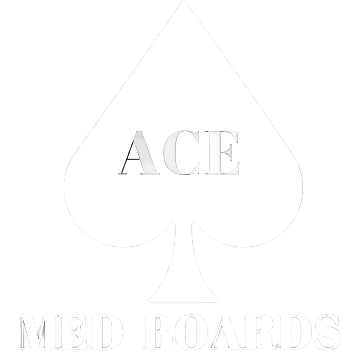5 Powerful Memorization Techniques for Med School
As a medical student, you’re faced with an overwhelming amount of information to learn and retain.
Whether you’re preparing for your next block exam or gearing up for the USMLE, having effective memorization strategies is crucial.
Let’s explore five powerful techniques that can help you retain medical knowledge more effectively.
1. The Memory Palace Method
This ancient technique remains one of the most powerful tools for medical students. Here’s how to use it effectively:
How It Works
- Choose a familiar location (your home, the route to school, etc.)
- Assign specific medical concepts to different locations
- Create vivid, memorable associations
Medical Student Example
When learning the cranial nerves, you might:
- Place CN I (Olfactory) at your front door (smelling dinner)
- CN II (Optic) in your living room (watching TV)
- CN III, IV, VI (Eye movements) in your kitchen (watching food cook)
This technique is particularly effective for shelf exam preparation, where you need to recall large amounts of organized information quickly.
2. Active Recall with Elaboration
Simple flashcards aren’t enough. The key is to elaborate on concepts while practicing recall.
Implementation Steps
- Write down a concept (e.g., beta-blockers)
- Close your notes
- Explain out loud:
- Mechanism of action
- Clinical applications
- Side effects
- Contraindications
- Check your explanation against your notes
- Focus on gaps in your knowledge
This method is particularly effective when preparing for the USMLE, where understanding relationships between concepts is crucial.
3. The Chunking Method
Our brains work better with organized information. Break down complex medical concepts into manageable chunks.
Example: Memorizing Lab Values
Instead of memorizing individual values, group them by:
- Kidney function (BUN, Cr, GFR)
- Liver function (AST, ALT, ALP)
- Electrolytes (Na, K, Cl, HCO3)
This approach helps you build meaningful connections between related concepts, which is essential for clinical reasoning.
4. Spaced Repetition with a Twist
Don’t just review cards at set intervals. Add these elements:
Enhanced Spaced Repetition
- Initial learning (Day 1)
- Quick review (Day 2)
- Teach the concept (Day 4)
- Clinical application (Day 7)
- Integration review (Day 14)
This method is particularly effective for long-term retention needed for medical school admissions prep and throughout your medical education.
5. The Connection Method
Create meaningful links between new information and existing knowledge.
How to Implement
- Start with what you know
- Build bridges to new concepts
- Create memorable associations
Example: Learning Pharmacology
When learning about ACE inhibitors:
- Connect to the RAA system you learned in physiology
- Link to common patient presentations from clinical rotations
- Associate with “-pril” suffix drugs you already know
Making These Techniques Work for You
Best Practices
- Combine multiple techniques based on the material
- Test yourself regularly
- Teach concepts to others
- Review and adjust your approach based on results
When to Use Each Technique
- Memory Palace: Best for ordered lists and classifications
- Active Recall: Daily studying and concept integration
- Chunking: Complex pathways and lab values
- Spaced Repetition: Long-term retention
- Connection Method: New concepts and clinical correlations
Remember, the goal isn’t just to memorize facts, but to build a robust framework of medical knowledge that you can apply in clinical practice.
These techniques will serve you well from your first day of medical school through your board exams and beyond.
Keep in mind that everyone’s brain works differently.
Experiment with these techniques and adapt them to find what works best for you.
The key is consistent practice and application, rather than passive review.
